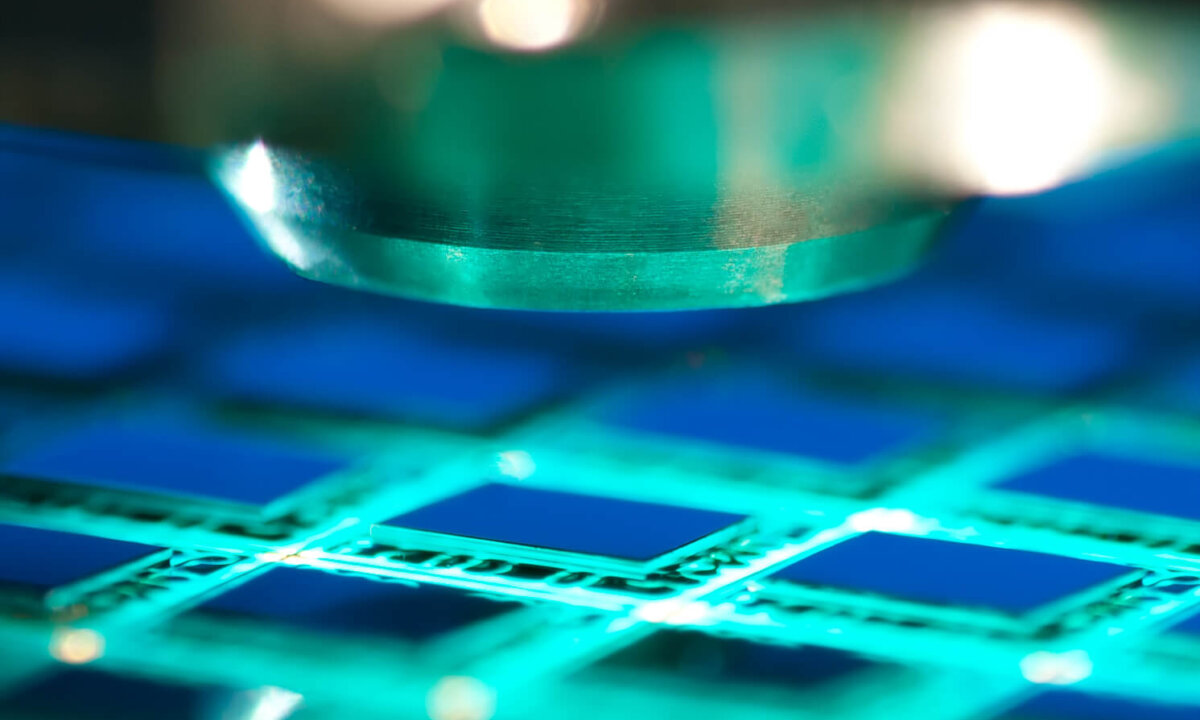A 3D InCites reader recently inquired whether cost drivers and fine-pitch requirements in 3D applications are moving manufacturers away from flux towards fluxless processes in the bumping steps for both bump formation and assembly.To answer this question, 3D InCites turned to the materials and equipment experts, speaking with Jeff Calvert, Global R&D Director, Advanced Packaging Technologies at the Dow Chemical Company, and Akira Morita, Business Development Manager at NORDSON Asymtek. Dow Chemical manufactures chemistries for advanced packaging processes including bump plating and assembly. NORDSON Asymtek is an equipment manufacturer known for its dispense jet technology, used, among other things, for dispensing underfill and flux in 3D advanced packaging assembly processes.
The Back Story
Fluxing is a critical step in interconnect formation processes involving solder materials including tin-lead or lead-free alternatives such as tin-silver. The fluxing process removes contaminants such as oxide layers or other impurities from the surface of the solder to facilitate reliable joint formation. Fluxing is also used after joint formation to ensure a clean metallic interface of the solder joint with underfill materials in subsequent assembly processing.
What Is a Fluxless Approach?
Traditionally, a fluxing agent is delivered in liquid form to the bumped surface, and additional cleaning steps must be used to remove residues that are left as a result of the fluxing process. In a “fluxless” process, a reagent that can also accomplish the oxide removal step is delivered in the gas phase to the bumped surface. Fluxless approaches typically do not require an additional cleaning step. “To a chemist, the term ‘fluxless’ is somewhat of a misnomer,” noted Calvert. “It refers not so much to the material itself but the method of delivery of the flux agent.” Equipment for performing fluxless processing is commercially available today from companies such as SemiGear.

Morita explained that “fluxless” can also refer to a non-conductive paste (NCP) or non-conductive film (NCF) for the underfill process during assembly that has the fluxing agent built in. During thermocompression bonding, the underfilling and fluxing functions are performed simultaneously, thereby eliminating the need for flux spraying/dipping and cleaning of the flux residue. Calvert elaborated that Dow Chemical is a supplier of pre-applied underfill materials that are intrinsically capable of performing fluxing during the joining process. He called this a “self-fluxing” approach.
In either case, “fluxless” or “self-fluxing” processes accomplish a similar end result – reliable interconnect formation without the use of additional cleaning steps.
Which Approach Suits 3D ICs?
3D integration and 3D packaging requires fine-pitch bumps of 50µm or less, and they are getting finer. Calvert explained that Dow currently uses both conventional fluxing as well as fluxless processes for their development of new bump plating and assembly products. However, getting liquid phase fluxing and cleaning chemistries into these increasingly tight pitches is becoming increasingly difficult. Fluxless processes that involve gas phase fluxing agent can get more easily into tight spaces and minimizes any post-processing cleanup.
Morita addressed the flux step during assembly. Cu pillars are used for finer pitches in 3D packaging, and need oxide removal step (fluxing) because copper is one of the metals to oxidize quickly. The flux delivery is directly followed by the capillary underfill process; or pre-applied underfill, which includes fluxing function and eliminates the need for a separate fluxing step.
According to Garrett Oakes, EV Group, the pre-applied underfill with “self fluxing” will be the way to go during thermocompression bonding because the company will not introduce flux into the bonding environment. Ron Huemoeller, at Amkor, concurs. The company plans on the self fluxing approach for 3D IC assembly.
Fluxless is clearly a new approach, and while, as Calvert notes, fundamentally there are drivers in 3D integration toward fluxless or self-fluxing processes, there are a number of things to consider beyond just the cost effectiveness.
Morita says the decision to move to a fluxless process is similar to the decision to move to pre-applied underfill. “The answer to whether pre-applied underfill is cost-effective or not depends on many other assumptions such as die size, bumps configurations, die layout, underfill bleeding, yield expectation and so on,” noted Morita. “While pre-applied underfill decreases process steps, and is effective to tight bump geometry, I don’t think the market has already moved to pre-applied underfill in general and even in 3D packaging.” He cited a lack of reliability data as one reason.
“It’s too early to say at this point that conventional fluxing approach won’t work for 3D,” noted Calvert, “But from a process chemistry perspective, there’s more extendibility with fluxless or self-fluxing approaches.”
So while the advantages of fluxless and self-flux approaches are clear, the shift won’t happen over night. In this slow-to-change industry, its likely that the conventional flux approach will be made to work until it can’t. ~ F.v.T.


















